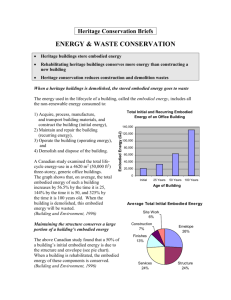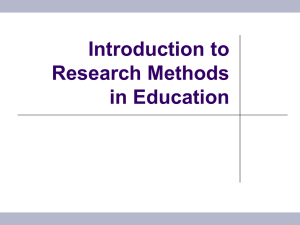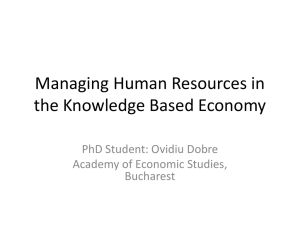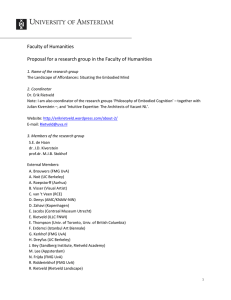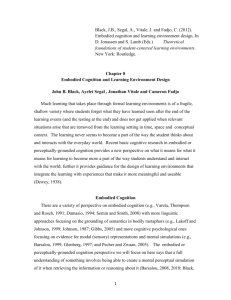Tom Westcott, ITS Global, Australia
advertisement
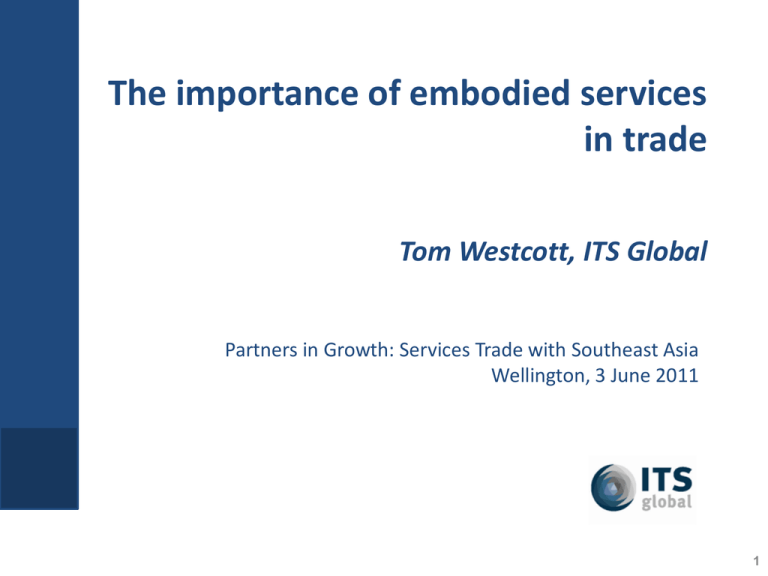
The importance of embodied services in trade Tom Westcott, ITS Global Partners in Growth: Services Trade with Southeast Asia Wellington, 3 June 2011 1 What are ‘embodied’ services? • They are intermediate services inputs embodied in the final output of a business, contributing part of its value • Businesses use internal resources (land, labour and capital) to manufacture, mine or grow and do this using additional external services • E.g. Manufacturing steel requires services such as electricity, a water supply, transport to market and typically business services such as accountants • Machinery exports include engineering services embodied in the machinery • (To be distinguished from ‘embedded’ services, which are services linked and related to the sale of merchandise or to the sale of another services. Eg. After-sale support.) 2 Key messages 1. Cross-border export data does not fully convey the contribution of services. • Embodied services make a significant economic contribution to exports that is not counted by usual export data • – about A$35 billion in 2008-09 in Australia are ‘carried’ by merchandise exports – in addition to A$52 billion in cross-border services exports Sales of services overseas by foreign affiliates of Australian companies also provide a major contribution not reflected in services exports – estimated at around A$108 billion in 2009-10. 3 Key messages 2. Embodied services are critical to manufacturing and global supply chains. • As businesses continue to outsource and adopt ‘lean production’ techniques, embodied services exports will continue to grow • – with technology advances (esp. telecoms) services can increasingly be disembodied or splintered – outsourcing means services are increasingly embodied in manufactures – this contributes to manufacturing efficiency and export growth There is a convergence in production systems in manufacturing and services – manufactures use more services – services delivery uses manufactured capital goods. 4 Key messages 3. Efficient services regulation matters in Southeast Asian manufacturing countries • Understanding size and distribution of embodied services becomes a policy tool • Policy makers can prioritise reforming regulation of services most used in manufacturing • Can identify key ‘carrier’ exports and services inputs they use • Can identify services industries most commonly embodied in exports • In general, regulating access to network services is a priority (e.g. transport, electricity, gas, water, postal and telecoms). 5 Which exports use most embodied services? • • For Australia: – manufacturing accounted for 26% of all services exported in embodied form – mining: 31% – agriculture: 4% – Services: 38% Notable manufacturing carrier export categories for Australia were – basic non-ferrous metal &products (3.6%); and – motor vehicles & parts (2.9%) 6 Industries whose services are embodied in exports • • Major sources of embodied services in cross-border exports: – Property & business services (26% of all embodied services exp.) – Transport & storage (15.6%) – Wholesale trade (12.3%) – Services to mining (11.9%) – Construction (6.9%) – Finance & insurance (6.3%) – Electricity, gas & water supply (5.5%) 16 ANZSIC services industry groups used in analysis 7 ITS Global’s report for the Australian government is available at: http://www.dfat.gov.au/publications/trade/Services-International-Linkages.html For further information, please contact: ITS Global 1/34 Queen St Melbourne, Australia Tom Westcott: t.westcott@itsglobal.net Jeffrey Rae: j.rae@itsglobal.net 8





